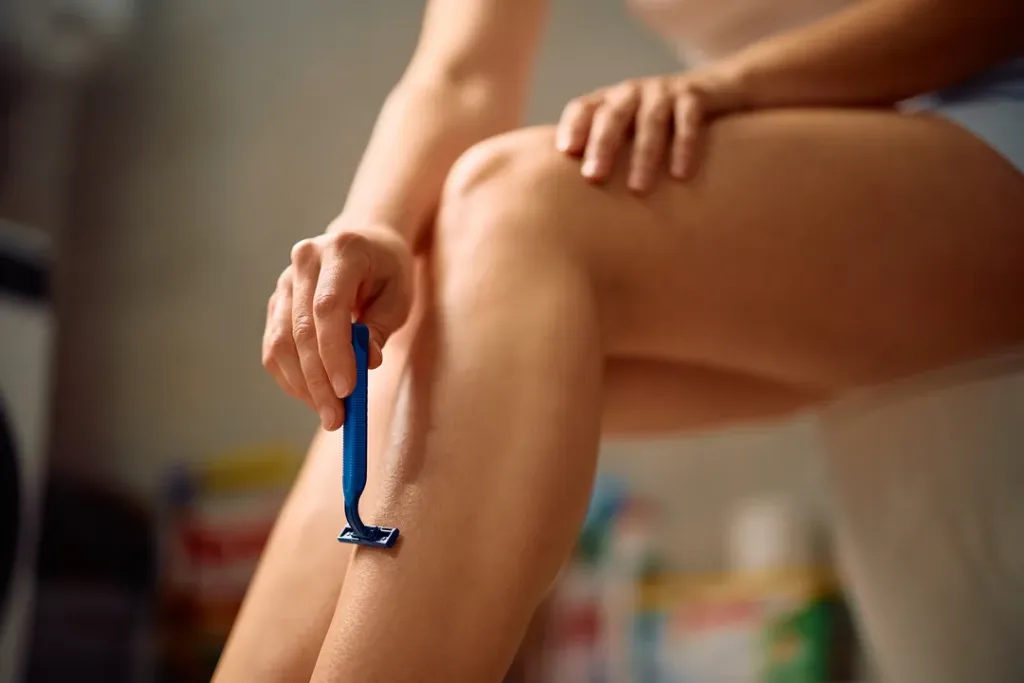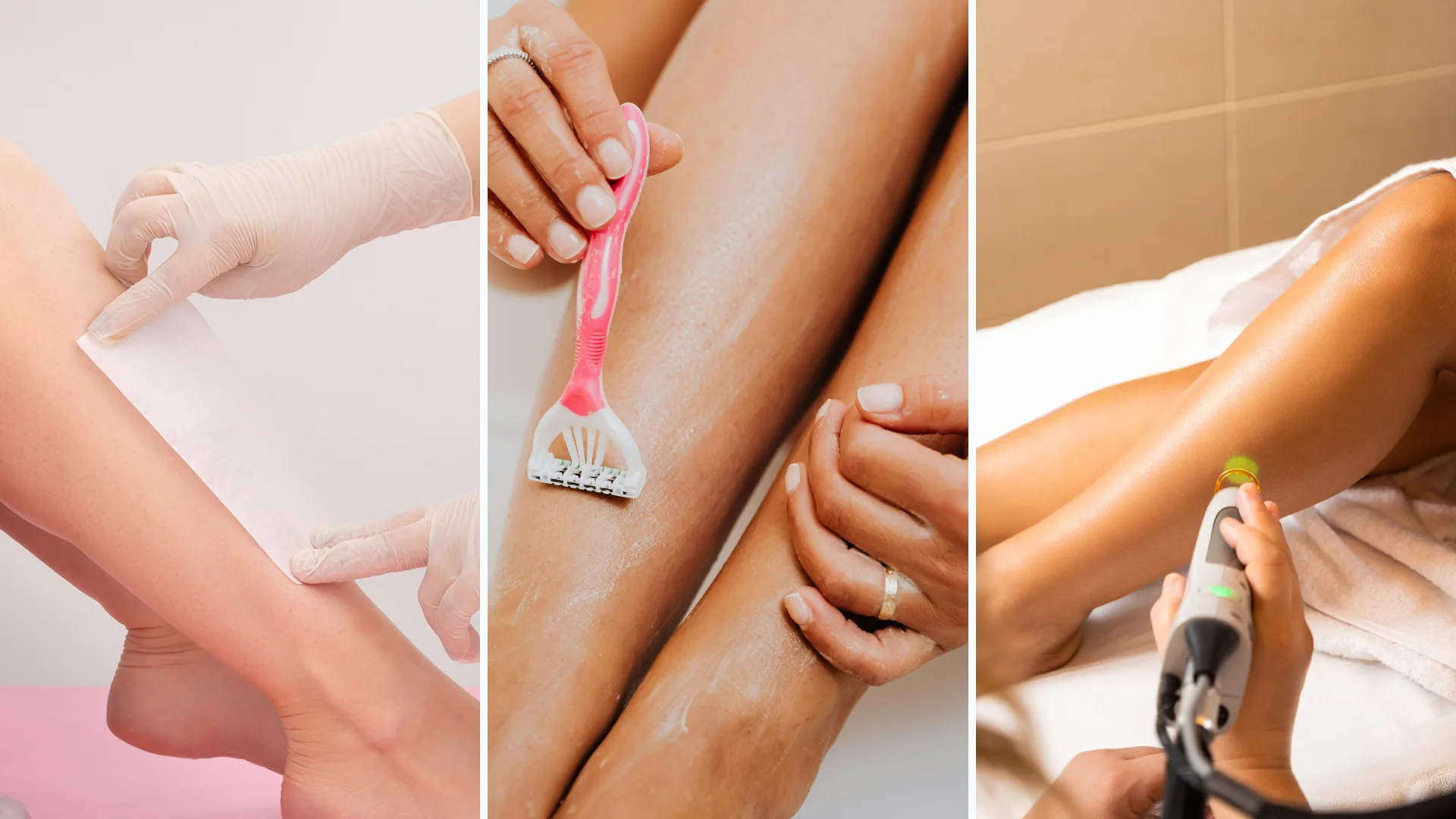Table of Contents
Ever find yourself wondering how often should you wax, shave, or book a laser session to keep things smooth? Each method works differently and timing matters for smooth results. Most people shave every few days, wax every 3–4 weeks, and space laser sessions several weeks apart.
Hair grows at different rates for everyone, so your ideal routine depends on hair type, skin sensitivity, and personal preference. In this article, we explore methods and timings of hair removal to help keep your skin smoother for longer.
Key Takeaways
- Timing for hair removal isn’t the same for shaving, waxing, and laser treatments.
- Your hair type and how fast it grows will change how often you need to do it.
- The right schedule can mean smoother skin and less irritation.
Understanding Hair Growth Cycles
Hair doesn’t all grow at once each follicle is on its own clock. There are three main phases: anagen (growth), catagen (transition), and telogen (rest). In the anagen phase, hair is actively growing from the root. This is when it’s thickest and most noticeable. How long this last depends on genetics and the area of your body.
Then there’s the catagen phase, which is quick. Hair stops growing, and the follicle shrinks. Only a small percentage of hair is here at any given time. Finally, the telogen phase is when hair just chills for a bit before shedding. New growth doesn’t start until this phase is over.
Waxing works best when hair is in the early anagen phase, since it’s rooted deep. Going every 4–6 weeks helps catch more hairs in this stage.
Laser hair removal is also most effective in the anagen phase, when pigment is concentrated in the hair. That’s why laser sessions are spaced out to give new hairs a chance to enter the right phase.
Hair Growth Cycle Phases
| Phase | Hair Removal Effectiveness |
| Anagen – Active hair growth | Most effective |
| Catagen – Transitional, stops growing | Less effective |
| Telogen – Resting, hair sheds | Least effective |
Waxing – How Often Should You Wax?

Most people find that waxing every 3 to 6 weeks works well. It really depends on how fast your hair grows and how thick it is. If your hair is fine or slow to come back, you might be able to wait six weeks. If it grows quickly, you’ll probably want to wax more often.
For spots like the bikini line or underarms, waxing every 2 to 4 weeks is common, especially if you like to stay silky smooth. Sticking to a regular schedule here can make hair softer and finer over time.
Pro-tip: You should let your hair reach the right length before waxing, about ¼ inch, or the size of a grain of rice. Too short, and the wax won’t grab; too long, and it’ll hurt more than it needs to.
Benefits of regular waxing:
- Hair grows back softer and finer
- Reduced hair density over time
- Longer-lasting smoothness
To keep things smooth:
- Exfoliate 2–3 times a week to clear dead skin and prevent ingrown hairs, just avoid scrubbing right after waxing.
- Skip the razor between sessions; shaving cuts hair at the surface and disrupts the root growth cycle, making your next wax less effective and possibly more painful.
Shaving – How Often Should You Shave?

Shaving is fast and easy for most people, whether it’s your face or body. A lot of folks shave every 1 to 3 days to stay smooth, but it’s up to your hair growth and what you’re comfortable with.
If your hair is thick or dark, you might need to shave more often. People with lighter or finer hair can usually wait longer. Men with fast-growing facial hair sometimes shave daily but skipping a day or two is totally normal too.
Skin type plays a big role here. If you have sensitive skin, shaving too often can lead to redness or razor burn. A good razor and a solid shaving cream can make things much more comfortable.
If you tend to have ingrown hair, try exfoliating before shaving and always shave in the direction your hair grows.
Other Shaving Tips:
- Use a sharp, clean razor
- Wet your skin before shaving
- Apply shaving gel or cream
- Moisturise after shaving
Laser Hair Removal – How Often Is It Needed?

Laser hair removal uses focused light to zap hair follicles. It works best on darker hair and lighter skin, but newer tech can handle more skin tones these days.
Most people start with a series of 6 to 10 sessions, about 4 to 6 weeks apart. That gives the laser a chance to catch hairs in the anagen (active growth) phase. Treating hair at this stage is key for good results.
Your skin needs a little time to chill between sessions. Some redness or swelling is normal, but it usually fades fast.
After you get through those first treatments, you’ll probably need maintenance every 6 to 12 months to keep things smooth and slow down regrowth.
What affects how often you’ll need treatments?
- Skin Type (Fitzpatrick I–VI)
Laser frequency can vary by skin tone due to how light energy is absorbed:- Type I–III (fair to light olive skin): Typically need treatments every 4–6 weeks. Laser energy is easily absorbed by darker hair with minimal risk of skin irritation.
- Type IV–V (medium to dark brown skin): Usually spaced 6–8 weeks apart to reduce the risk of hyperpigmentation or burns.
- Type VI (deep brown to black skin): Also requires 6–8 weeks between sessions, with careful monitoring to avoid skin damage.
- Hair colour
- Lasers works better on dark, coarse hair. However, new tech can handle most hair colours nowadays.
- Area Treated
Hair growth cycles vary by body part:- Face (e.g. upper lip, chin): Has a shorter hair growth cycle, so treatments are usually done every 4 weeks.
- Body areas (legs, arms, back): These have longer cycles, so sessions are typically spaced every 6–8 weeks.
- Bikini & underarms: Often treated every 4–6 weeks, depending on hair density and growth rate.
Long-term, you could see permanent hair reduction, fewer ingrown hairs, and smoother skin.
Comparing Methods – What’s Right for You?
Each hair removal technique has its ups and downs. Cost, comfort, and how much maintenance you’re up for can help you decide what fits your life (and patience level).
Comparing Waxing, Shaving, Laser
| Hair Removal Method | Pain Level | Long-Term Results | Skin Sensitivity | Frequency Needed |
| Waxing | Moderate/High | Smooth for weeks | Can cause irritation | Every 3–4 weeks |
| Shaving | Low | Only lasts 1–2 days | May cause razor burns | Every 1–3 days |
| Laser | Mild to Moderate | May become permanent | Possible redness | Every 4–8 weeks (initially) |
Waxing pulls hair out at the root, so your skin stays smoother longer than shaving does. Shaving just gets the surface hair, so it grows back fast. Laser goes after the hair follicle itself, which can mean less hair long-term.
Waxing can sting a bit, shaving is usually gentle but sometimes leaves nicks or rashes, and laser treatments might tingle but tend to get easier with time.
When to Adjust Your Routine
Pay attention to how your skin acts after hair removal. If you notice redness, bumps, or irritation that sticks around, it might be time for a change.
Signs you should adjust your routine:
- Burning or stinging after shaving or waxing
- Skin not healing between sessions
- Ingrown hairs becoming more common
- Dryness or flaking
If your skin feels raw after waxing, try spacing sessions further apart—2–3 weeks for underarms and bikini lines is common, but some areas need more recovery.
Depilatory creams can be harsh and plucking too much may cause irritation or patchy growth. Ease up if you notice discomfort.
Laser hair removal requires aftercare: avoiding the sun, skip harsh skincare products, and adequate time to let your skin heal. For the best advice, consult a dermatologist or laser specialist.
Book Your Hair Removal Consultation
Thinking about smoother skin? At Blush, we can help you sort out when to wax, shave, or start laser treatments.
Why choose Blush?
- Personalised advice for every skin and hair type
- Friendly, caring professionals
- Calm, relaxing salon environment
Book a consultation and you can ask all your questions about the best hair removal method for your needs. Our specialists walk you through how often to wax, when to shave, and if laser is a good fit for you.
Everyone’s hair and skin are different, so it helps to get advice that’s tailored to you and not just generic tips.
Ready to start? Whatsapp Blush and set up a time. Our team is happy to help you figure out a plan that fits your lifestyle
Frequently Asked Questions
Honestly, shaving between waxes isn’t a great idea. It makes hair look blunter and messes with the growth cycle you need for waxing to work well.
Shaved hair grows back with a blunt tip, so it feels stubbly and looks more noticeable. It’s better to let the hair grow out so the wax can grip it effectively.
Most people start noticing changes after a few treatments. Hair becomes finer, lighter, and grows more slowly with each session.
Laser appointments are usually spaced several weeks apart to match hair growth cycles, and it takes multiple sessions for full results.
Shaving too frequently can lead to skin irritation, razor burn, or ingrown hairs. Some people also experience dry or red skin.
It’s a myth that shaving makes hair grow faster or thicker — it only looks that way because the blunt cut creates a coarser appearance.
You can switch between waxing and laser, but timing matters. Avoid waxing for a few weeks before starting laser treatments.
Laser needs the root intact to be effective — and waxing removes it. Stick to shaving in the weeks leading up to your laser session.

